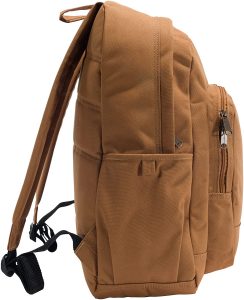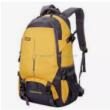1. Choose the Right Backpack:
- Select a backpack with multiple compartments, pockets, and adjustable straps to help distribute weight evenly.
2. Make a Packing List:
- Create a detailed packing list to avoid overpacking and ensure you have everything you need.
3. Roll or Fold Clothes:
- Rolling clothes instead of folding them saves space and reduces wrinkles. For delicate items, folding might be better.
4. Use Packing Cubes or Compression Bags:
- Packing cubes and compression bags help organize and compress clothing, making it easier to fit more into your backpack.
5. Pack Versatile Clothing:
- Choose clothing items that can be mixed and matched to create different outfits with fewer items.
6. Wear Bulky Items:
- If you’re bringing heavy or bulky items like jackets or boots, wear them while traveling to save space in your backpack.
7. Prioritize Essential Items:
- Pack essential items first and then add optional items if there’s space left.
8. Maximize Backpack Compartments:
- Use different compartments for specific items, like a laptop sleeve, toiletry pouch, and smaller pockets for accessories.
9. Pack Heavier Items Closest to Your Back:
- Place heavier items like laptops, books, or toiletries closer to your back for better weight distribution.
10. Pack Fragile Items Carefully: – Place fragile items in the center of the backpack, surrounded by softer items to provide cushioning.
11. Utilize the Top Lid: – The top lid of your backpack can hold small, frequently used items like sunglasses, snacks, or a small camera.
12. Consider Packing Layers: – Items you’ll need throughout the day should be on top for easy access, while less frequently used items can be packed deeper.
13. Use Shoe Compartments or Bags: – If your backpack has a separate shoe compartment, use it to keep footwear away from clean clothes. Alternatively, use cloth bags to store shoes.
14. Eliminate Unnecessary Items: – Leave behind items you can easily buy at your destination, like toiletries or bulky towels.
15. Avoid Overpacking: – Stick to your packing list and resist the temptation to bring “just in case” items that you might not actually use.
16. Use Ziploc Bags for Toiletries: – Place toiletries in resealable Ziploc bags to prevent leaks and spills from affecting your clothes.
17. Secure Small Items: – Use small pouches or organizers for items like charging cables, adapters, and miscellaneous accessories.
18. Pack Electronics with Care: – Protect electronics by placing them in padded cases or wrapping them in soft clothing.
19. Test the Weight and Fit: – Once you’ve packed, put on the backpack to test its weight and comfort. Adjust straps and weight distribution if needed.
20. Reevaluate Before Departure: – Before leaving, go through your packed items again to make sure you’re not carrying anything unnecessary.
Remember, efficient packing is a skill that improves with practice. Over time, you’ll develop your own techniques and preferences for maximizing space and organization within your backpack.


























